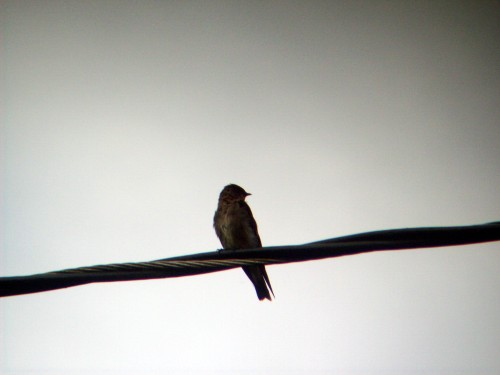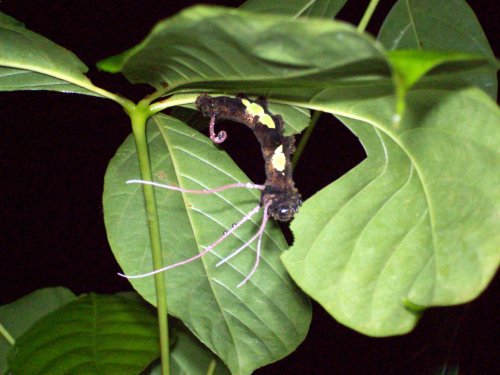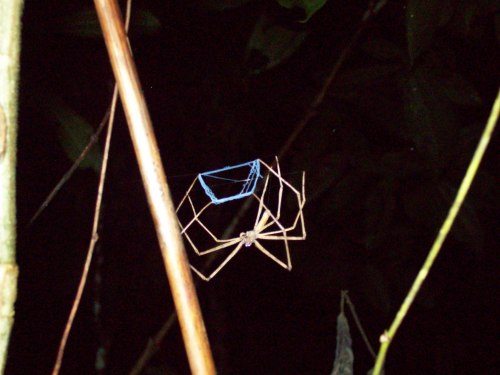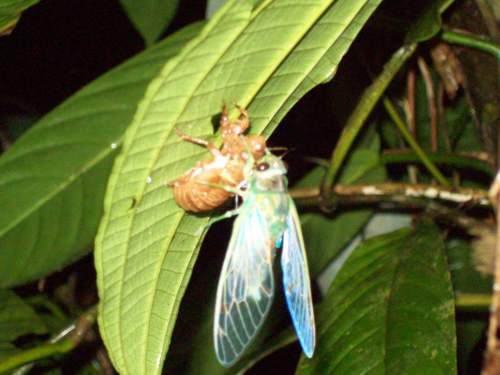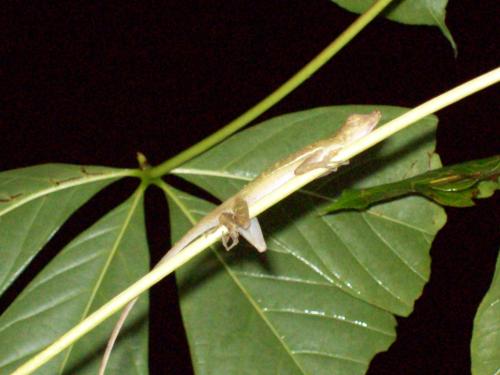Today, my alarm does not go off, so I cannot go birding. After breakfast we go to Rolando’s property to plant trees. On our route there, I spot a Southern Rough-winged Swallow sitting on a telephone wire and a Crane Hawk soaring, which I identified by a white stripe running down the wing near the tips. It is much easier going today as it is cooler in the shade and we only need to plant half as many trees as yesterday (it is still one hundred, but that is one hundred less than previously). We finish our last planting job in about an hour.
After lunch we go play soccer with the locals. Jeff, Sarah, Bryan, Jose, Luigi, Roy, Rolando, and I all played. I scored two goals again. About half an hour into the game, it begins to pour. This is not a rainstorm; it is a deluge. It is raining so intensely that the water stings my back. As it rains, a large tree branch collapses. A tremendous crack rings out and everyone turns around to see half of the 80 foot tree slough off. The tree falls away from the field and toward the bullring. By the end of the game, we are playing in two inches of water. The field is a swamp. Everyone slide tackles because you fly five meters, as the ground is like a slip-and-slide. You cannot dribble as the ball floats in the water. When it is kicked, it just dies on the ground. Everyone is splashing, falling, rolling, and sliding. This is one of those moments which I will never forget.
Sarah and I go on a night hike after the rain lets up. We see several spiders and wonder if spider silk strength at all correlates to spider size (especially per unit mass). We also wonder if the three dimensional webs that we see everywhere here are a result of the necessity for increased robustness to deal with rain and/or larger insects. The spiders here have far more insects to eat than those in the temperate forests, which only produce two dimensional webs. Another hypothesis, we learn, is that extra strands which may seem superfluous actually help birds to see the otherwise invisible webs. Creating these extra strands is much easier than having to produce a whole new web if a bird flies through it. Sarah also notes the water gathering adaptation of heliconia flowers. They are like little cups . A small frog jumps from leaf to leaf. Finally, we see a strange caterpillar creature. It is brown with lime-green splotches on its sides and tiny legs which do not seem to be particularly effective. Most noticeably, they have four long, pink antennae-like protrusions from their heads near their large black eyes. They are eating the leaves of a small sapling. Initially, we think that this may be a cordyceps fungi, which infect insects’ brains and drive them upwards where they die. The fungi then bursts out of the head and grows to a tip, which then splits, sending spores outward, infecting more insects. However, we see that there are two of the same kind and they are both eating calmly. Still, these are very strange creatures which look like a mishmash of various animals or aliens.
I head back and go to sleep, but not before almost stepping on a cane toad. The giant toads are very common here. If run over on a motorcycle, they pop. This is a popular game amongst Ticos, perhaps it is their version of bubble-wrap. The toads are simple creatures, they register the world in shadows. If the shadow is larger than them, they hop away. If the shadow is smaller, they try to eat it. Sometimes they do not know what is making the shadow so they run directly into you.
